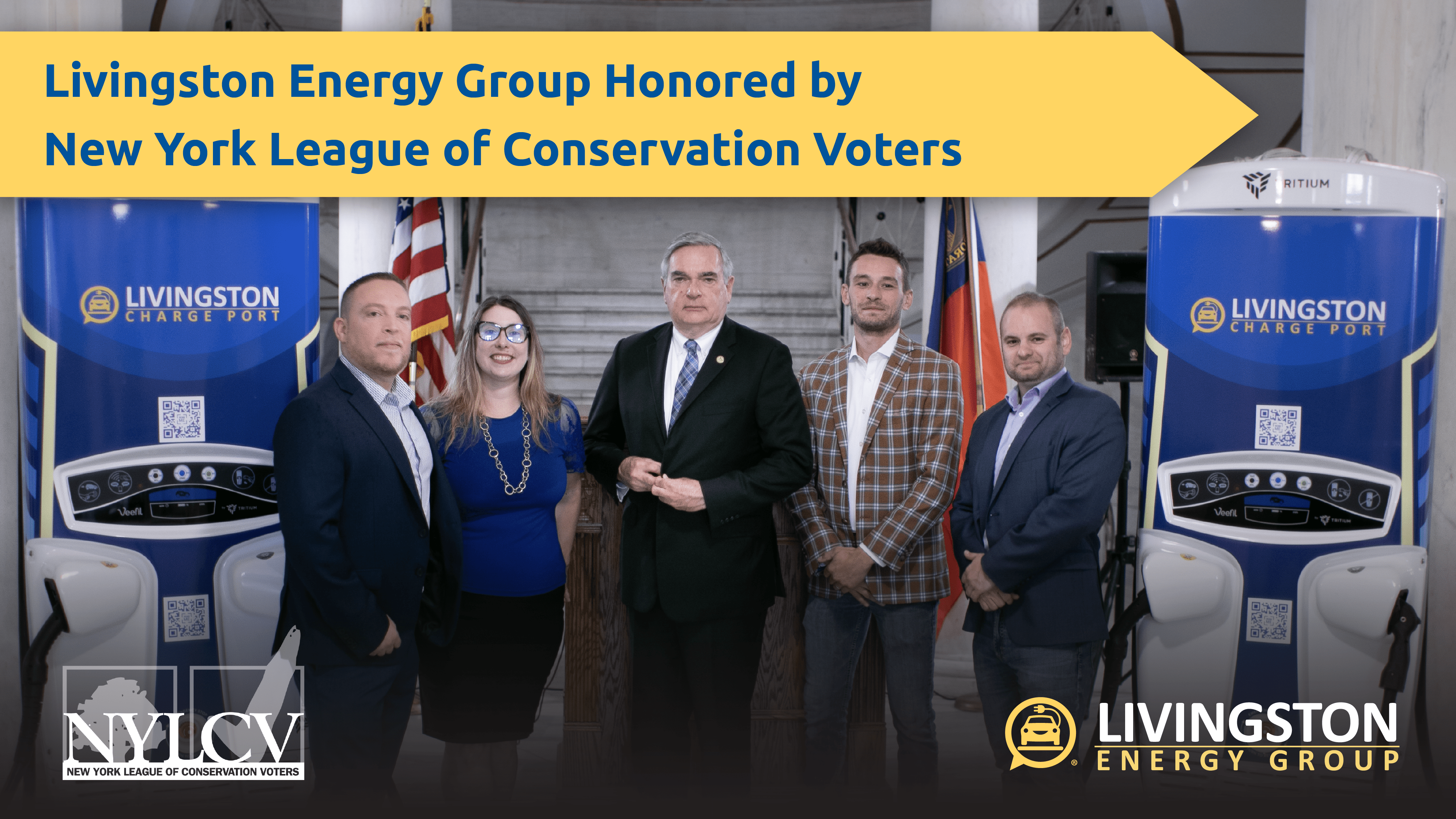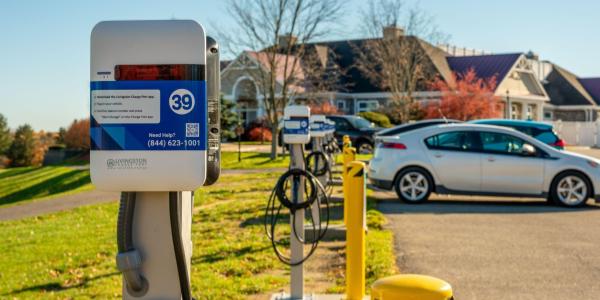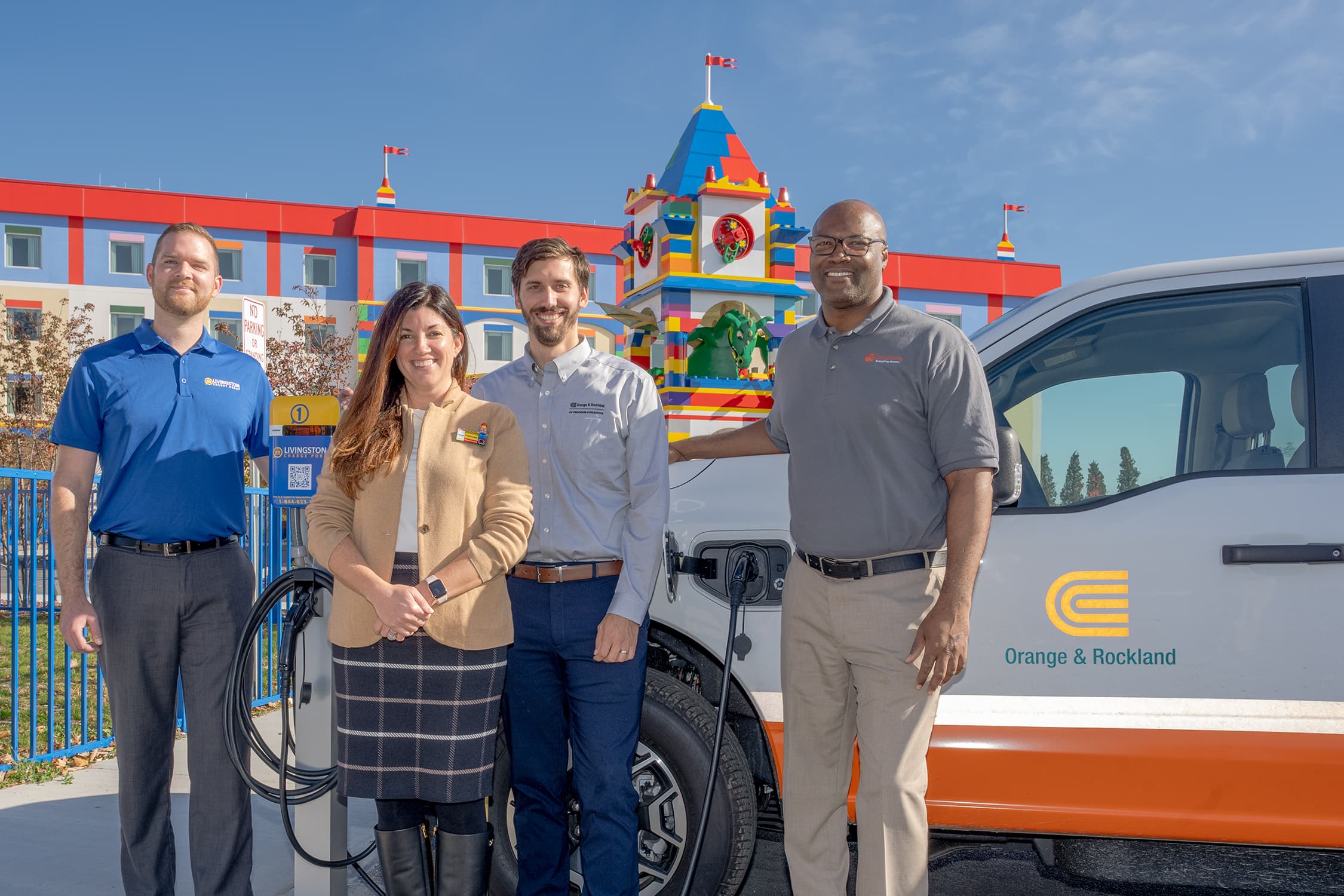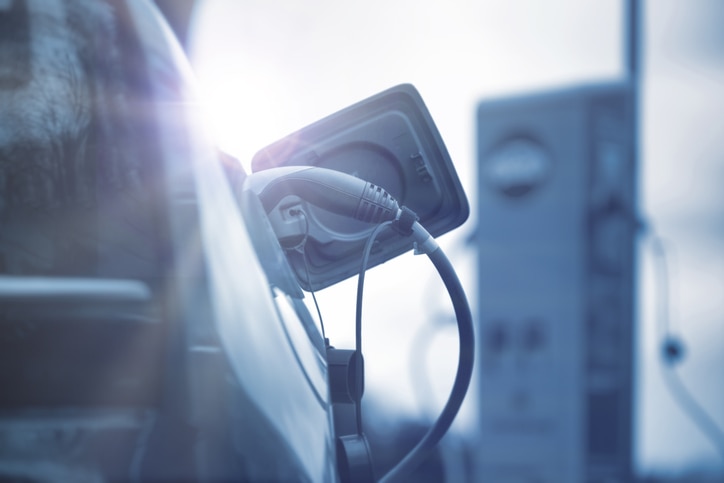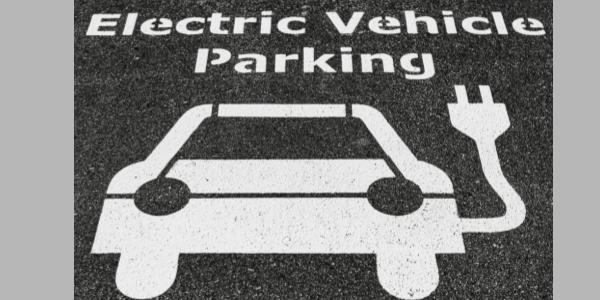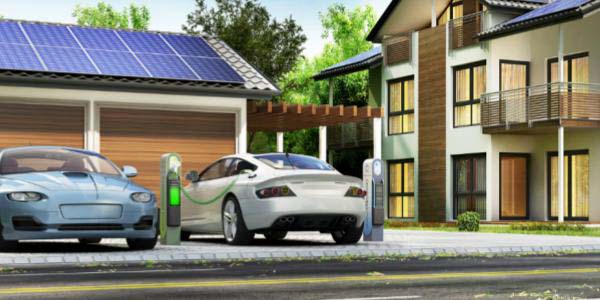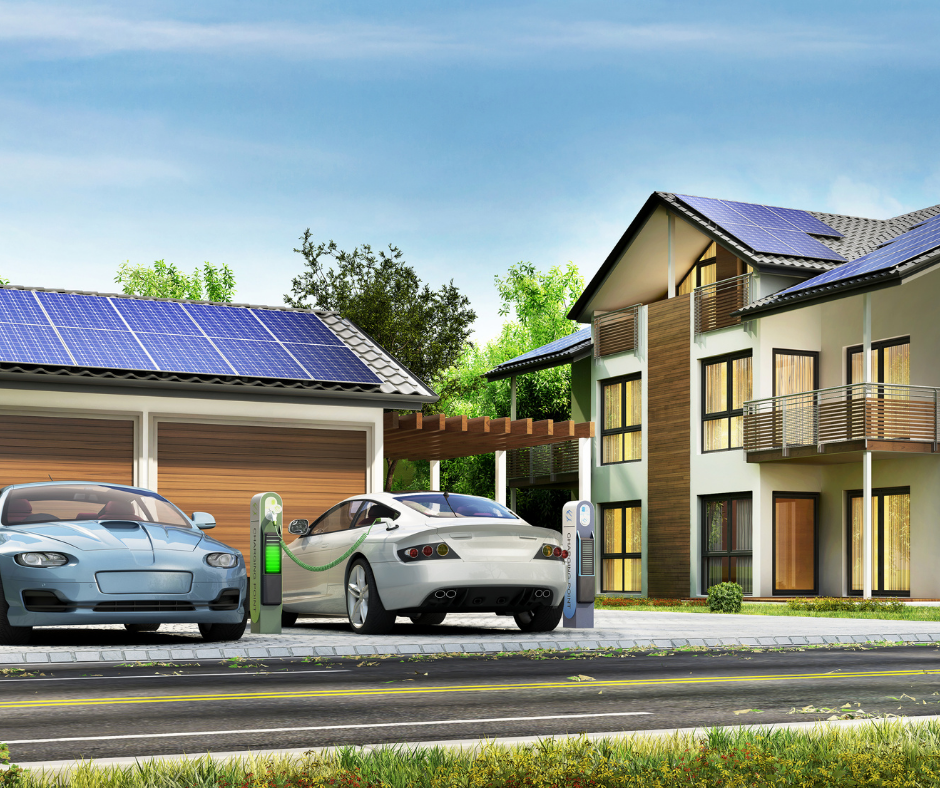
Van Patten, Livingston Energy Group, and National Grid Cut the Ribbon on the Largest EV Charging Station Deployment in Upstate New York
Project is consistent with Van Patten’s focus on the future of their organization and the technology that will get them there.
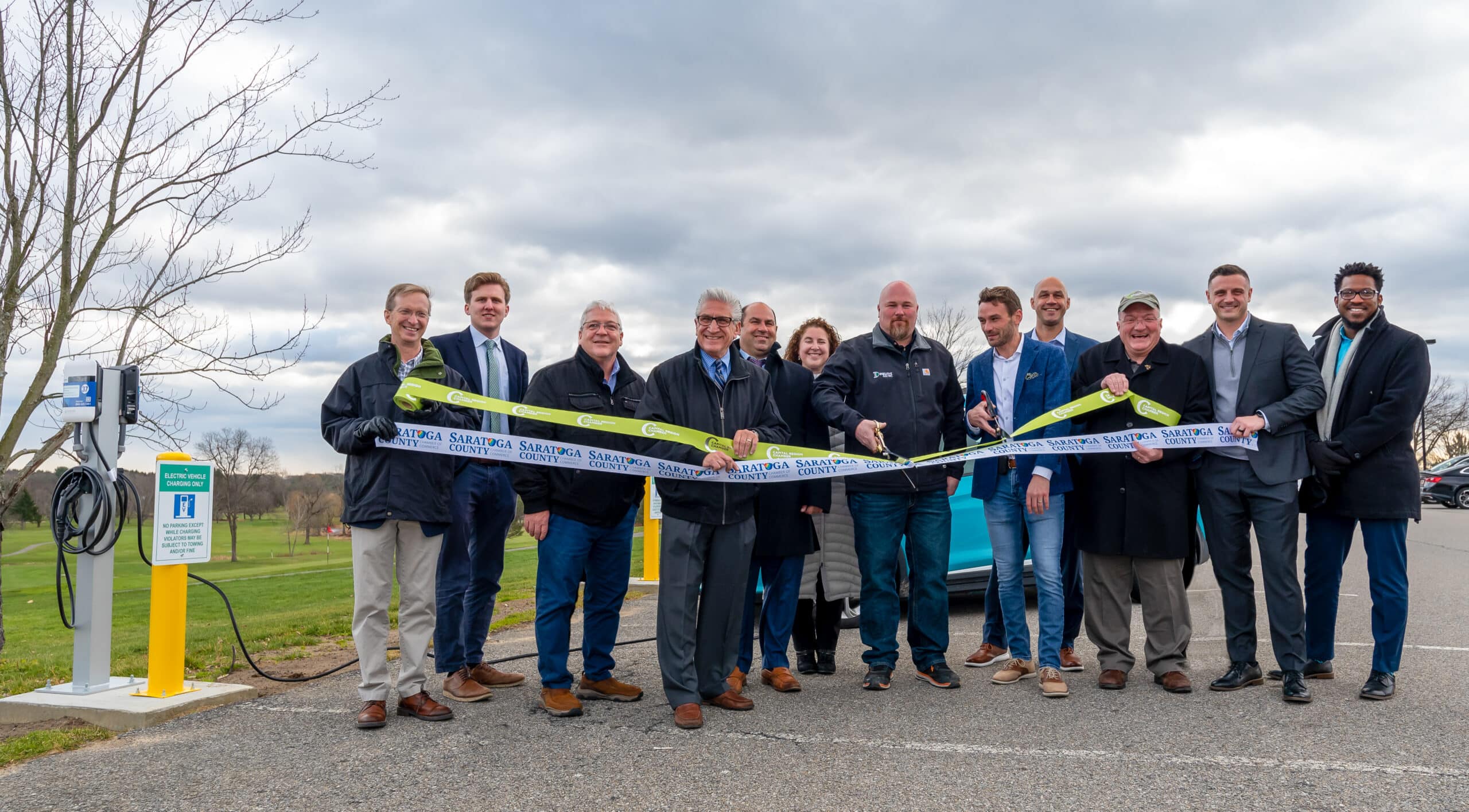
Jonesville, NY –Van Patten Golf Club has been one of the top golf courses in the Capital Region of New York State since its founding in 1968. Much of their success over the years can be attributed to their dedication to their sport and their constant self-evolution as a destination. The club has taken a step toward the future of green energy in their latest investment; an installation of 50 charging stations for electric vehicles. Livingston Energy Group, a Lynkwell company, is a Schenectady, NY-based solution provider for EV charging stations. They have partnered with National Grid’s make-ready program to secure grant funding for Van Patten’s project. This installation is the largest single deployment of electric vehicle chargers in Upstate New York and is setting an example for others in the entertainment and tourism industry to make changes to accommodate the increase in electric vehicle drivers.
Located in Jonesville, NY just north of Clifton Park, Van Patten Golf Club is host to a recently renovated 27-hole course and 15,000 square-foot clubhouse that features a full restaurant and bar. Their venue space allows them to host and facilitate local events, making them a destination not just for their members but for the public as well. This is precisely why Van Patten has chosen to accommodate its ever-growing patronage by providing vehicle charging stations to all those who visit.
Since 2016, Livingston Energy Group has assisted municipalities, developers, and facility managers with the adoption of more efficient technologies and is focused on cutting-edge solutions to support the rapid growth of electric vehicle adoption. Through their robust catalog of hardware and software solutions, they can design EV charging solutions for any size deployment. The 50 charging stations at the Van Patten Golf Club utilize the Livingston Charge Port EV charging network that allows their patrons to easily locate and activate the charging stations as well as enables the golf club to use real-time station monitoring.
The Van Patten Golf Club, Livingston Energy Group, National Grid, the Saratoga County Chamber of Commerce, and the Capital Region Chamber of Commerce held a special ribbon cutting ceremony for the new charging stations on Thursday, December 1st at 11:30 AM.
“It’s great to be in Clifton Park at the Van Patten Golf Club for the unveiling of a whopping 50 new electric vehicle charging stations for those with electric cars. Thanks to the Van Patten Golf Club, Livingston Energy Group, National Grid, the Capital Region Chamber of Commerce and Saratoga County Chamber of Commerce for making this possible for patrons of the golf club,” said Senator Jim Tedisco.
“Congratulations to The Van Patten Golf Course and its partners, Executive Electric, Livingston Energy Group and National Grid, on today’s unveiling of the largest electric vehicle charging station in Upstate New York,” said Assemblywoman Mary Beth Walsh. “As more New Yorkers transition to electric vehicles, it is important to make these charging stations more centrally located and accessible for residents and visitors alike.”
“As New York continues its transition to clean energy, it’s important that we continue to support and expand electric vehicle charging infrastructure. Thanks to Van Patten Golf Course & Executive Electric, Livingston Energy Group and National Grid, the largest electric vehicle charging station deployment in the state is now located here in the Capital Region”, said Assemblyman Angelo Santabarbara, a long-standing member of the NYS Assembly Committee on Energy. “This announcement marks another important step in achieving our goal of building more sustainable, vibrant communities. I commend the local organizations and community leaders that worked collaboratively on this important project.”
Joe Gunther, General Manager at Van Patten Golf Club, said “The Van Patten Golf Course has always been committed to providing our golfers with accommodations that make their day fun and worry-free. Now, with the help of Executive Electric, National Grid, and Livingston Energy, we are able to provide EV owners the opportunity to charge their vehicles while they enjoy a round of golf or a fabulous meal at The Cooley Kill Restaurant. Electric Vehicles are quickly becoming the future for New York State, and we are proud to be one of the largest charging stations currently available for EV owners.”
Todd Shimkus, President of the Saratoga County Chamber of Commerce, with offices in Clifton Park and Saratoga Springs added, “As Saratoga County’s Tourism Promotion Agency, we’re getting more and more requests from visitors and prospective visitors about where they can access EV stations and the same is true of people relocating to our area, putting EV stations at local attractions, like the Van Patten Golf Club, is just a smart business strategy for both the golf course and Livingston Energy as well as a statement of their commitment to our environment.”
“As both an area business executive and town of Clifton Park resident, I am excited that the Van Patten Golf Club has taken the bold step of putting such a large number of EV stations at their facility,” says Pete Bardunias, Senior Vice President, Membership and Community Advancement, Capital Region Chamber. “With a looming deadline just 12 years away for all-EV new car sales in New York State, the infrastructure simply must be in place or we are going to face serious mobility challenges as a society. Thanks to the visionary work of Livingston Energy and the foresightedness of the Van Patten management team, a solid step forward has been taken towards preparing us for the realities of 2035.”
Brian Sano, Regional Executive, National Grid commented that, “This installation at Van Patten Golf Course includes 50 plugs that National Grid contributed $270,000 to help fund as part of our statewide effort to increase chargers. Our program will fund up to 100% of the electric infrastructure costs associated with new EV charging stations like those here in Clifton Park. Working with local installers, like Livingston Energy, has made these projects possible.”
“Livingston Energy Group is proud to partner with Van Patten Golf Club and National Grid on this record-breaking initiative,” said Nick DiSarro, Director of Project Design and Development at Livingston Energy Group. “We are excited to take part in a project of this magnitude, that allows for patrons and guests to charge up while they are at Van Patten. This project has gone hand-in-hand with the recent restructuring and renovation of the entire course and will ensure that their location continues to draw activity to their clubhouse throughout the off-season.”
 The installation of 50 EV charging ports at Van Patten Golf Club is an exciting new amenity for visitors as well as the general public. Guests attending their numerous golf outings, weddings, banquets and special events will have the opportunity to charge their vehicles while they are enjoying all that the location has to offer. The charging stations are accessible through the Charge Port EV Charging mobile app available on the Google Play & iOS app stores. Learn more about Van Patten’s current golfing options, events, and renovation plans on their website. https://www.vanpattengolf.com/
The installation of 50 EV charging ports at Van Patten Golf Club is an exciting new amenity for visitors as well as the general public. Guests attending their numerous golf outings, weddings, banquets and special events will have the opportunity to charge their vehicles while they are enjoying all that the location has to offer. The charging stations are accessible through the Charge Port EV Charging mobile app available on the Google Play & iOS app stores. Learn more about Van Patten’s current golfing options, events, and renovation plans on their website. https://www.vanpattengolf.com/
About Livingston Energy Group
A New York based energy technology company, providing a full suite of services and equipment for the installation and management of electric vehicle (EV) charging stations and the required infrastructure. Since 2016, the company has assisted municipalities, developers, and facility managers with the adoption of more efficient technologies; and is now focused on cutting-edge solutions to support the rapid growth of electric vehicle adoption. Livingston offers a robust catalog of hardware and software solutions that utilize the Livingston Charge Port EV charging network that easily integrates with new and existing installations. Learn more about Livingston Energy Group’s offerings at https://www.solution.energy.
About Van Patten Golf Club
Located in beautiful Southern Saratoga County, in the hamlet of Jonesville, 20 minutes from Saratoga Springs, this 27-Hole Public Golf Course is a challenge to all levels of handicap. Built in 1968 the course features large, mature, spacious greens, sloping wide fairways and expansive views of the countryside. In 2004 the sequence of the golf holes was reconfigured when the building of the 15,000 sq. foot Grand Clubhouse, The Vista, was completed and opened to the public. The unique challenging setting makes this course well worth the trip from any location.
https://www.vanpattengolf.com/
About National Grid
At National Grid, we are committed to delivering safe and reliable energy to the customers and communities we serve.
We are one of the largest investor-owned energy companies in the US — serving more than 20 million people throughout New York and Massachusetts.
We are at the heart of one of the greatest challenges facing our society — transforming our electricity and natural gas networks with smarter, cleaner, and more resilient energy solutions to meet the goal of reducing greenhouse gas emissions. Every day we work with stakeholders to promote the development and implementation of more sustainable, innovative and affordable energy solutions.
We are proud of the contributions our work and our people make towards the prosperity and wellbeing of our customers, communities and investors.
https://www.nationalgridus.com/Default.aspx



